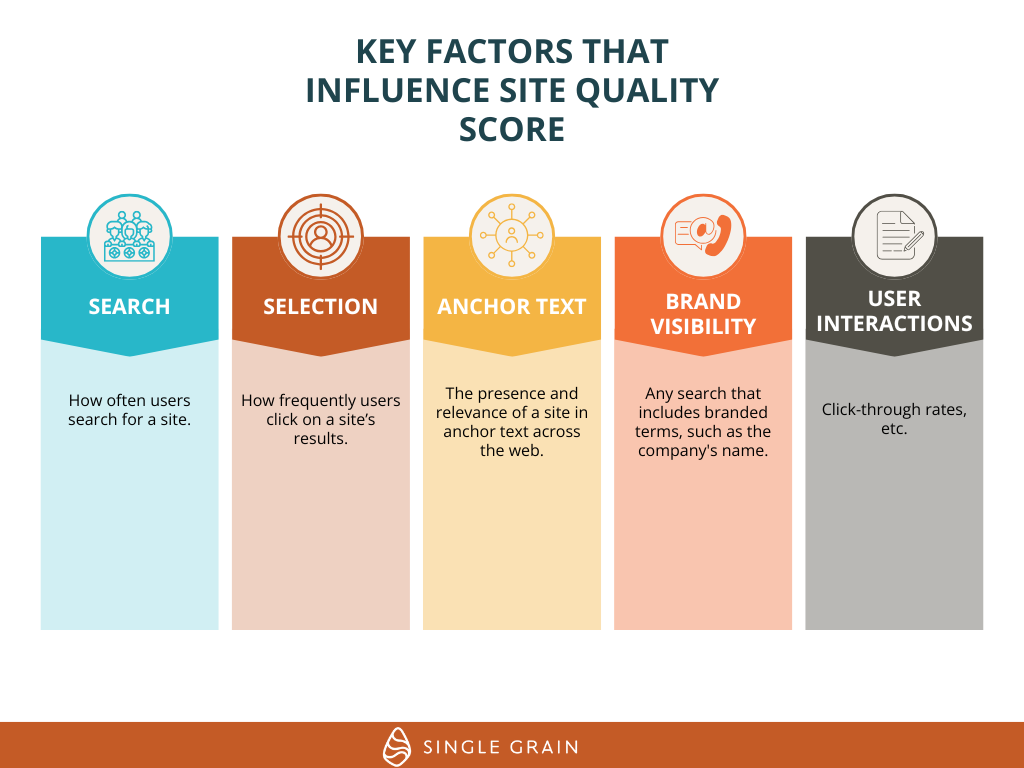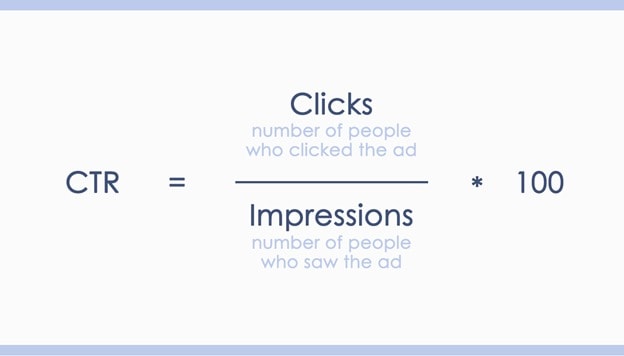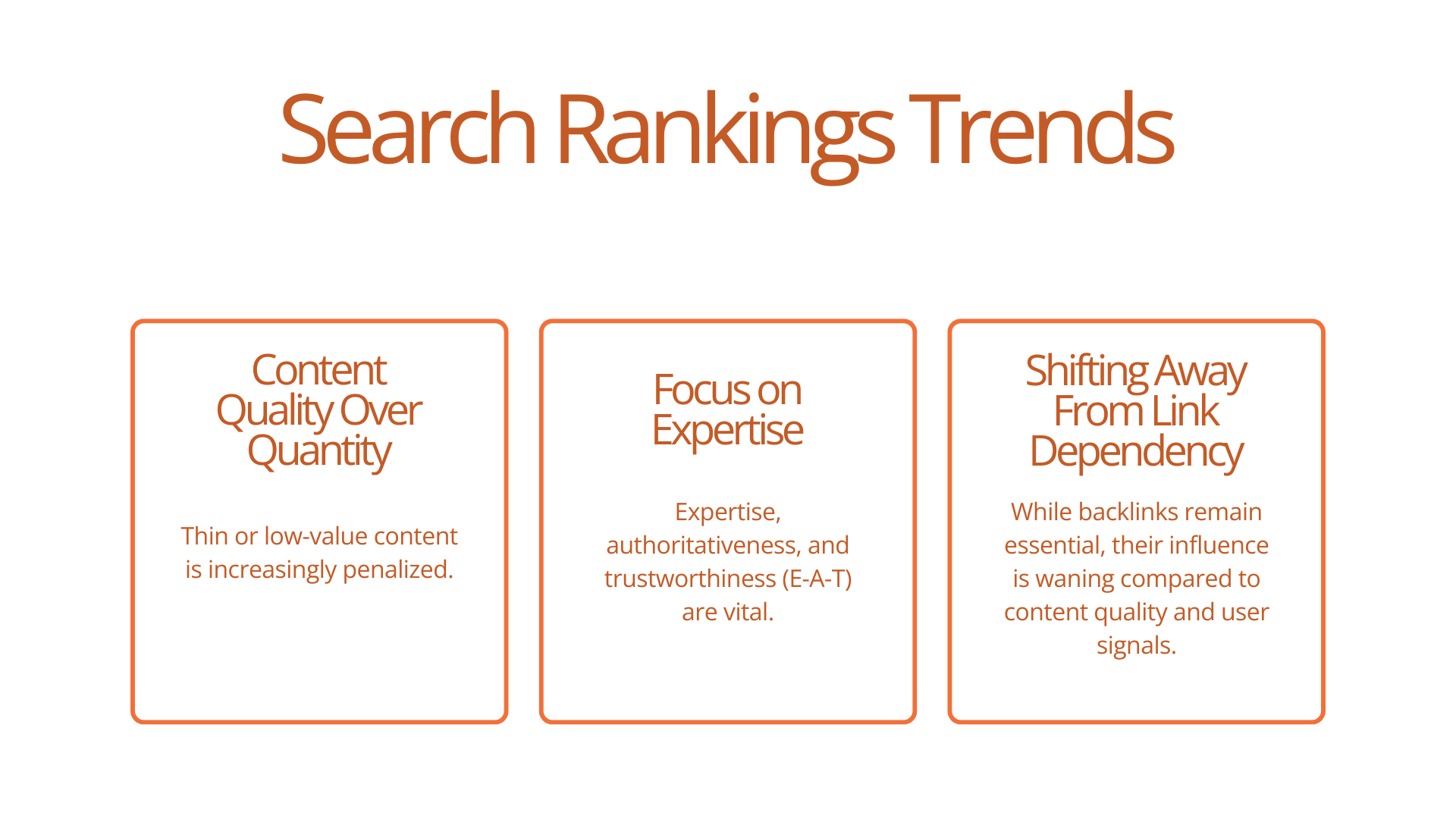How Google’s Click Probability Impacts Search Engine Rankings
This post is all about understanding how Google ranks content based on click probability.
The search engine optimization (SEO) world was buzzing about a Google exploit that uncovered over 2,000 classifiers to determine rankings. This Google exploit is click probability, which uses predictive data to forecast user behavior. Click probability, in addition to website quality and user interactions, sheds light on how and why Google ranks websites the way it does.
Click probability and predictive analytics are something we understand well. After all, it’s how we helped a client increase organic traffic by 268% with an AI-driven SEO strategy.
TABLE OF CONTENTS:
How Click Probability Works in SEO
Click probability is crucial in shaping search engine algorithms and is influenced by multiple factors, including machine learning models and predictive analysis. Understanding click probability can help businesses and marketers optimize their strategies for better visibility and higher engagement.
Here’s a closer look into this.
Machine Learning Models
Machine learning (ML) models are one of the leading technologies that Google uses to predict and optimize click probability in SEO. Google uses ML to analyze historical data and find patterns that understand how user behavior correlates to different search queries. These models allow Google to enhance the relevance of search results.
Predictive Analysis
Source: Slingshot
Google uses predictive analysis to evaluate the likelihood of a user clicking a website. This is based on several factors, such as:
- Content relevance
- Search intent
- Position on the search results page (SERPs)
These data-based insights can better predict user behavior and market trends. Google also uses this data to adjust its search algorithm based on audience demand and other trends.
The 8 Keyword Classifications
Google classifies nearly all search queries into eight refined semantic classes:
- Short fact-based queries: These are yes-or-no questions or straightforward factual inquiries.
- Boolean queries: Designed for logic-based searches, such as “true or false” scenarios.
- Instructional queries: Questions seeking guidance, like “how to bake a cake.”
- Definition queries: These include “what is” or “define” type searches.
- Reason-based queries: Inquiries like “Why does the sky appear blue?”
- Comparison queries: Questions comparing two or more entities, such as “Android vs. iOS.”
- Consequence queries: Searches about impacts are often tied to YMYL (“your money, your life”) topics.
- Other: A catch-all category for searches that don’t fit neatly into the above.
These query classifications help Google refine its understanding of user intent, allowing it to tailor results accordingly.
Key Metrics in Google’s Ranking Formula
Google evaluates websites using an array of metrics to determine click probability and ranking position, with some key ones being:
- Brand visibility: The extent to which a brand appears across the web and in search results.
- User interactions: Engagement metrics, such as time spent on a page and bounce rates.
- Anchor text relevance: How relevant the anchor text linking to a site is to the query.
However, these aren’t the only factors that Google considers for click probability. Site quality score, historical SERP position, and meta tags are others.
The Role of Site Quality Score
Google’s site quality score is another critical ranking factor. This score, typically ranging between 6 and 7 for most websites, is evaluated at the subdomain level. The higher your quality score, the more valuable your page is to users.

Key factors influencing this score include:
- Search: How often users search for a site.
- Selection: How frequently users click on a site’s results.
- Anchor text usage: The presence and relevance of a site in anchor text across the web.
- Brand visibility: Any search that includes branded terms, such as the company’s name.
- User interactions: Click-through rates, etc.
A site’s brand identity also plays a role. Google will also measure certain branding factors for click-through probability, such as how often users select your website, search for your brand name, and how usually your company appears in anchor texts.
That said, the intent must be relevant to your brand. If a user clicks on your website but immediately exits after your site loads, this tells Google your website isn’t what users expected. This is common for brands with similar names or two companies with the same name but in different industries.
For instance, if users frequently search for a specific brand (e.g., “Single Grain”), it signals trust and relevance, positively impacting the site quality score. However, if users search for “Single Grain” but expect a whiskey company instead of the marketing agency, it could negatively impact the score.
SERP Position
Your position on the SERPs has always impacted how much web traffic you receive. The top position gets 39.8% of CTRs, so aiming for the number one spot is still key in an SEO strategy.
This correlation is driven by user behavior and how search engines prioritize visibility; in short, the closer a result is to the top, the likelier a user will click on it.
However, as we will discuss in the branding section, reaching the top spot isn’t always the most critical metric. That’s because Google awards the top position to brands with a high DA and those earning the most backlinks. Investing in gray or black hat strategies tends to backfire since these tactics manipulate the algorithm.
That’s why Google considers other factors. For example, if a user enters a niche or specific query, Google will find a page that best fits the query instead of lending the top spot to high-DA websites. This is especially true for commerce intent searches, where Google immediately lists products and services that best fit the query.
What about earning the AI overview? Yes, but not as much as you would think. While 52% of sources in AIO are in the top 10 results, that doesn’t mean they’re number one. That’s because AIO focuses on information related to the query, not the ranking factors that Google uses to determine click probability.
Creating relevant content and excellent user experience is still paramount. When Google recognizes these quality metrics, it will naturally rank you higher.
Meta Tags
Meta tags communicate directly to search engine algorithms. This information is in the HTML code and informs Google bots of the content on a web page, in addition to offering meta descriptions, titles, and keywords.
Plus, optimizing for meta tags has always had SEO benefits. Optimizing your meta descriptions for keywords and communicating unique value propositions can drive more traffic and engagement.
It’s important to note that Google writes 62.78% of meta descriptions. Provide your own meta tags based on your selling propositions, brand, keywords, and other intent factors.
What About Click-Through Rate?

Source: CXL
There’s a lot of confusion about whether Google uses click-through rate (CTR) directly in rankings. Officially, Google states it doesn’t. However, many SEO experts believe otherwise. Studies and anecdotal evidence—like the famous experiment by Rand Fishkin—suggest CTR manipulations can influence rankings, at least temporarily.
In Fishkin’s test, users were instructed to click on a specific search result and interact with it. The result saw a sharp rise in rankings.
The reason why is simple: if a website has a high CTR, it means the page is relevant. In turn, it has a positive effect on rankings.
While Google downplays such strategies, real-world evidence indicates CTR and user engagement might have more influence than officially acknowledged.
Long-Term vs. Short-Term SEO Strategies
There’s a divide between short-term hacks and sustainable SEO practices that will drive long-term growth. Some companies exploit CTR manipulation tools, paying users to simulate genuine engagement. While these methods may yield quick gains, they’re risky and unsustainable.
While these short-term strategies may offer a temporary traffic boost, the key is to maintain the top position on the SERPs. Marketers should create quality content while staying updated on algorithm changes.
The Power of Branding in SEO
Brand visibility is increasingly pivotal in search rankings. After Google’s Helpful Content Update, strong brands emerged as clear winners, while sites relying on SEO tricks declined.
The reason why is simple: consumers trust brands and are likelier to click their results, even if they’re at the bottom of the SERPs.
Here’s why branding matters:
- Search consistency: Users searching directly for a brand’s name (e.g., “Neil Patel” or “Apple”) signal trust.
- Anchor text dominance: When a brand’s name appears consistently in the anchor text, it enhances credibility.
- User loyalty: A recognizable brand attracts repeat visitors, boosting engagement metrics.
Adapting to Google’s Evolving Algorithm

As Google continues to refine its algorithms, specific trends are becoming clear:
- Content quality over quantity: Thin or low-value content is increasingly penalized.
- Focus on expertise: Expertise, authoritativeness, and trustworthiness (E-A-T) are vital.
- Shift away from link dependency: While backlinks remain essential, their influence is waning compared to content quality and user signals.
Creating informative content and having a user-friendly and responsive website will always be key in ranking on SERPs.
While these best practices have been constant, Google algorithm changes can vary depending on trends and new technologies. The best course of action is to stay updated on all new Google algorithm changes and read reliable SEO blogs.
Common Mistakes When Optimizing for Google Click Probability
Many factors can hurt your rankings on Google. Some of the most detrimental examples include:
- Keyword stuffing in your meta title and description: Overloading keywords into your meta tags, precisely the title and description, can look spammy. Google continues to squash spam in SERPs, especially now with AI search. Plus, keyword stuffing impacts readability, which decreases clicks.
- Ignoring mobile optimization: Responsive web design was a huge marketing focus years ago. With all the new technology surrounding AI and automation, it can be easy to overlook the basics. 58.67% of web traffic comes from mobile phones, so Google still sees responsive web design as a key factor in click probability.
- Not using images in your blog content: 90% of people prefer visuals over written content. Google knows visuals capture user interest, so including images, infographics, and video will enhance your click probability. In addition, avoid generic and bland visuals, like stock images. Increase CTRs with infographics, graphs, videos, and visual CTAs.
Click Probability Is the Key to Dominating the SERPs
The recent exploit revealing Google’s click probability is a game-changer for the SEO community. This exploit showed the key semantic classifications and metrics used by Google to rank websites and how branding is more important than we think.
That said, brands should still use the tried and true ways to rank on Google. Investing in long-term SEO strategies and adjusting your tactics to accommodate search algorithm changes is the secret to sustainable organic growth.
Have you applied all of these best practices but your competitors are still rising above you in the SERPs? Single Grain Marketing can help you increase organic traffic and CTRs, improving brand awareness and more sales. Click here to learn more about our process.
If you’re ready to optimize the click probability of your content, Single Grain’s SEO experts can help!👇
[faq_here]
Related Video
For more insights and lessons about marketing, check out our Marketing School podcast on YouTube.
The post How Google’s Click Probability Impacts Search Engine Rankings appeared first on Single Grain.


